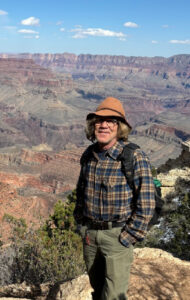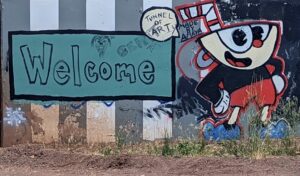 Is it mere vandalism, a messy rash on the skin of polite society? Or creativity trickling through cracks in mainstream culture? Graffiti is both, of course, and more. It is vox populi, the voice of the people.
Is it mere vandalism, a messy rash on the skin of polite society? Or creativity trickling through cracks in mainstream culture? Graffiti is both, of course, and more. It is vox populi, the voice of the people.
Graffiti is all around us. On a bathroom wall it might be nothing but crude sexual gestures. On city streets it can remind us that not all the news is fit to print. In repressive countries it speaks truth to power.
Writing or painting on a wall serves the innate human drive for self-expression, a trait that’s as ancient as rock art and as current as TikTok. Like a bumper sticker or your latest Facebook post, graffiti seeks an audience.
It flourishes at the margins. Like weeds that bloom in vacant lots, graffiti bursts forth in the alleys and under bridges, across the steel hulls of freight cars and along the sides of shipping containers. Whether it’s a scribbled tag, or something as complex as a Diego Rivera mural, this outlaw art always draws me in.
For decades I’ve watched graffiti appear and disappear out on Old Munds Highway, where it slips under I-17 through a short concrete tunnel–a perfect canvas for graffiti. I assume that young people paint most of what shows up on the tunnel walls: a marijuana leaf here, a mushroom there, the occasional peace sign or red circle-A, for anarchy.
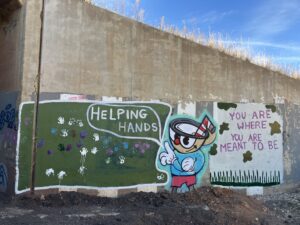
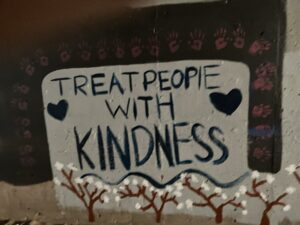
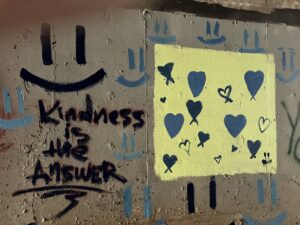
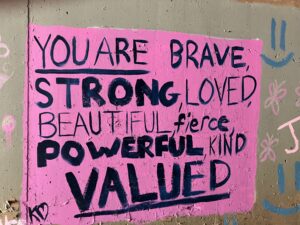
Graffiti accumulates in the tunnel for a year or so until someone–a highway worker, I guess–comes by to paint over it. Afterward, big rectangles of monkey-shit brown or prison-bathroom green hide all vestiges of anarchy.
Never for long, though. The kids will show up again one Friday night in the freshly-neutralized tunnel, slapping new paint up on the concrete. The gravel will crunch as they drive away, laughing. I hope they will make it home safe. I hope the homes themselves are safe places.
Being a teenager has never been easy, and it seems to get tougher all the time. Pressure to get good grades and admission to college can feel overwhelming. Dangerous drugs are everywhere. The normal emotional challenges of teen life get supercharged by social media. It’s a lot to deal with.
So I was pleased a year and a half ago, when the latest wave of graffiti appeared under I-17. Over a period of weeks, the underpass became the “Tunnel of Art”. Drivers at each end were greeted by a playful, larger-than-life cartoon character. Pink hearts with wings took flight. Clusters of yellow stars beamed. Young hands dipped in paint had left their dripping marks. Multi-hued bunches of flowers floated over boldly-lettered messages.
No hate, one said.
Kindness is the answer, said another.
There were others, each striking notes of encouragement and hope: Grow in your own way. You deserve good things. You are strong. You are brave. You are beautiful. You are valued. You are loved.
I drive Old Munds Highway about once a week, and for a year or so, my trips through the Tunnel of Art never failed to put a smile on my face.
But now it’s gone. A few weeks ago, the kids’ joyful work was dutifully snuffed out, this time with a shade of paint that could be called chronic-depression grey. Order has been restored.
Or maybe some angry, wounded kids will get there first, to splash their dark fury and private pain on the tunnel walls like fresh blood. To flip the middle finger at a world they can’t love, a world that might not love them enough.
Either way, I’ll be glad they are letting out what should not be kept inside. To any kid who feels the urge to leave a mark on those walls under the highway, my wish is that you do it. And that you find hope, and learn kindness, and know that you are loved.
Because, as one of those painted-over panels in the Tunnel of Art proclaimed, You deserve every good thing this world has to offer, and nothing less.

